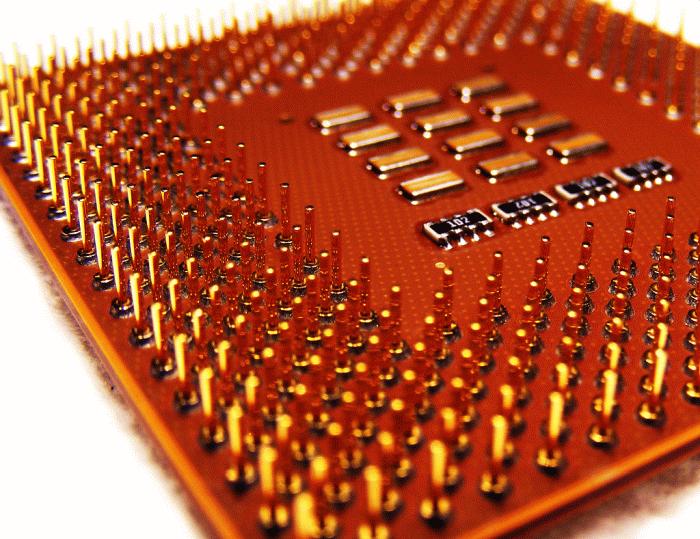
This year marks two decades since we first opened our digital doors here at Newegg. It’s been a remarkable twenty years and while a lot has changed, we couldn’t be happier about where we are, or where we’re heading. So, to celebrate our vicennial anniversary we’re taking a quick trip down nostalgia lane, all the way back to the year of our birth. Bust out your wraparound sunglasses, grab a family size bag of Crispy M&M’s, and crank up the Eve 6 cause we’re taking you on a ten-stop tour of what it was like to have a passion for PCs in the year 2001!
Intel Pentium 4 – Leading sales and failing forward
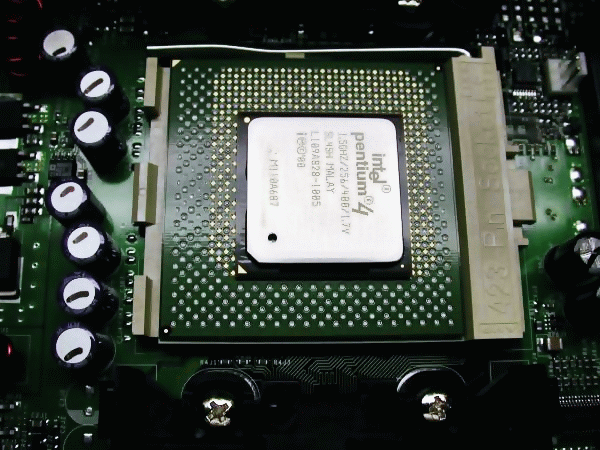
Image by JulianVilla26 licensed under the Creative Commons Attribution-Share Alike 4.0 International
The CPU wars were just starting to get good. AMD’s Athlon had the Pentium III on the ropes in the performance arena, so Intel developed the Pentium 4 with its new “NetBurst” microarchitecture. The earliest version would only outperform its predecessor with SSE (Streaming SIMD Extensions) optimized programs. When running legacy applications, the Pentium 4 was lucky if it could keep up with the old Pentium III. Its reception was tepid at best and many critics mocked the “NetBust” architecture as a failed experiment. Even as Intel made Pentium 4s with 15 percent higher clock speeds, they couldn’t outdo the 1.4 GHz Athlon in real world performance. Finally, in August 2001, Intel released the 2 GHz Pentium 4. Running at 2000 MHz with 400 MHz bus speed they were finally edging out their competition in performance. But not for long.
See: Intel Desktop CPUs on Newegg
Athlon XP – Greater than the sum of its stats

“Athlon XP Pins” by Josh Swannack is licensed under CC BY-SA 2.0
Even though AMD produced better performing CPUs than Intel, they struggled to match sales numbers. This was mostly due to Intel’s higher clock speeds which were all that unsavvy shoppers would consider when buying. Once the 2 GHz Pentium 4 was released, AMD was well and truly in second place. But on November 5th 2001 AMD released the Athlon XP 1900+ and reclaimed the performance throne. Even though it only produced real world speeds of about 1.6 GHz, this little wonder outpaced the 2 GHz Pentium 4 in almost every performance test and metric. This resolidified AMDs title as master of performance, even though they couldn’t quite master the sales.
See: AMD CPUs on Newegg
NVIDIA GeForce 3 – Pixel shaders, vertex shaders, and MSAA, oh my!

Hyins, Public domain, via Wikimedia Commons
The year 2001 brought us some unforgettable PC games, like Return to Castle Wolfenstein or Diablo II: Lord of Destruction. It also brought us some titles that we couldn’t seem to forget about fast enough (who is Max Payne?). No matter how you slice it though, if you wanted to get the most out of the blistering graphics of Command and Conquer: Red Alert 2 – Yuri’s Revenge, you needed a top-of-the-line graphics card. Luckily in that same year, NVIDIA launched its GeForce 3 featuring several improvements on the previous generation. It was the first in the line to include programmable pixel and vertex shaders, as well as MSAA (multisample anti-aliasing) to smooth out jagged edges. The first models were only kinda better than the GeForce 2 in actual performance, but they opened the door for much more impressive models (Ti200 and Ti500) later in the year.
See: Nvidia Graphics Cards on Newegg
Radeon 200 Series – A hidden gem for savvy shoppers

“Radeon 8500 – przód” by Moher of Invention is licensed under CC BY-SA 2.0
GPU competition never got as heated as the CPU wars, but the tech race was still heated and the R200 series was a crucial step for ATI. Capable of dual display output, it also had a video decoding engine with adaptive hardware deinterlacing, and motion compensation. The R200s also introduced pixel shader version 1.4 which doubled the maximum number of arithmetic and texture addressing instructions. It was impressive, but suffered from bad drivers and poor update implementation that was made worse by the cunning moves of NVIDIA who released their own updates on the exact same day. Even still, the Radeon 8500 was able to outperform the GeForce 3, while also maintaining a more affordable price tag.
See: Radeon Graphics Cards on Newegg
Creative Labs Sound Blaster Live! 5.1 Platinum – The Platinum standard in sound

“File:Sound Blaster Live! 5.1 PCI.JPG” by Pollastre 94 is licensed under CC BY-SA 4.0
You can debate whether or not a sound card is a necessary PC component. What was harder to argue in 2001, was buying any sound card other than a Sound Blaster Live! 5.1 Platinum from Creative Labs. It was expensive, but it was also the most universally applicable soundcard of the time, and it came with a ton of extras, including extra front facing input and output, as well as an infrared remote for easy MP3 control at a distance. Finally, no more getting up and walking to your computer just to skip Smash Mouth on that summer mix disc you burned.
See: Yes, we still have sound cards on Newegg!
Samsung SyncMaster D957DF – The last of the not-quite-flat screens
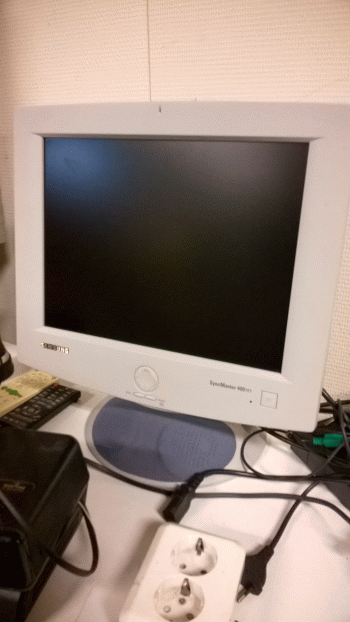
Donald Trung Quoc Don (Chữ Hán: 徵國單) – Wikimedia Commons
When it came to monitors in 2001, they were almost all variants on the same cream or beige cube design. The Samsung SyncMaster was no exception. You probably knew someone who had one of these since they were popular for their ok performance and lowish price tag. It was one of the last 19” monitors without a truly flat screen so no matter how you adjusted the geometry, you’d always experience a slight warp at the edges of your screen. With a refresh rate of 96kHz and a bandwidth of 250 MHz it featured a max resolution of 1920×1440 at 64Hz, which was only adequate for the time, but again the monitor was such an affordable option that you might forgive it’s less than stellar performance in favor of the savings.
See: Samsung Computer Monitors on Newegg
NEC FE1250+ – 2001 22” monitor technology at its finest
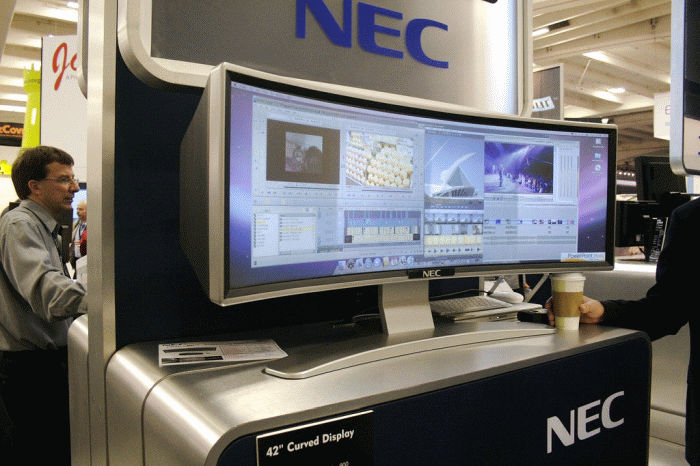
(That’s the 43″ version pictured above) Image by Flickr user Kazuho Okui licensed under CC 2.0
Let’s say you didn’t care about saving money. Let’s say you wanted performance and a gargantuan display! You might have found yourself shopping for the NEC FE1250+ 22” monitor. With top end technology like a DiamondTron NF tube, this sleek sexy monitor had a scant 18.6” depth profile and only weighed a little over 65 lbs! Starting at around $700 means that only the serious screen junkie might consider the investment, but one look at all twenty diagonal inches of digital glory and you’d know it was money well spent.
Yamaha Lightspeed(2) – The fastest burner in the west
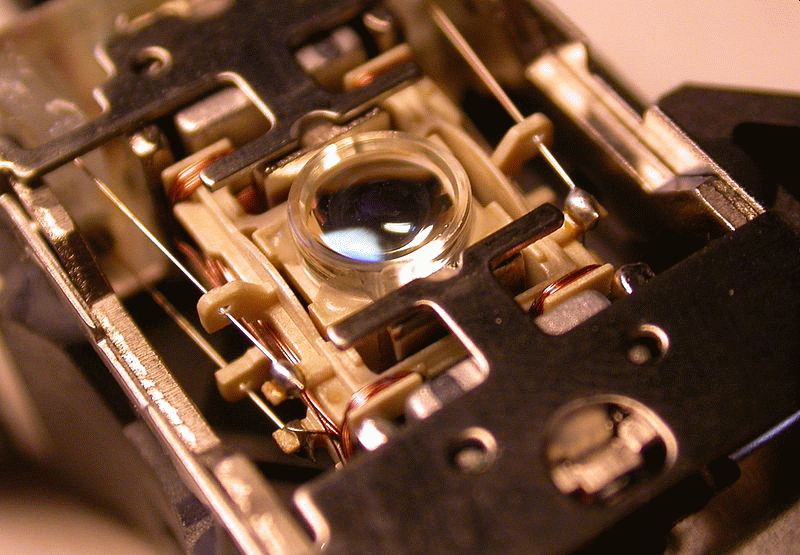
Ioan Sameli, CC BY-SA 2.0, via Wikimedia Commons
In the early 2000’s you couldn’t take a road trip or flirt with your crush without a carefully curated mix CD. The fastest path from Winamp playlist to the perfect expression of your feelings was your computer’s optical disc recorder, and in 2001 the Yamaha Lightspeed(2) was the fastest and most advanced optical drive around. Using a technology, they called “SafeBurn” the drive would use an 8 MB buffer when transferring data to ensure greater fidelity and avoid problems caused by underrun. Another feature, Optimum Write Speed Control, would also ensure that it was using the best speed for the disc. It even came with Adobe PhotoDeluxe… for some reason.
Yes, we still sell optical drives on Newegg!
Alienware Aurora DDR – When gaming gets serious

Jan 20. Alienware Logo” by jerryluo0520 is licensed under CC BY 2.0
OK, it’s Friday night, you blasted 3 Doors Down the whole way home after seeing Jet Li’s The One, and you’re full of Mtn Dew Code Red. You are amped. You don’t want to simply play Quake III Arena; you want to experience it! You walk to your desk and turn on your absolute beast of a PC tower in its stylish polished black case. You smile as it roars to life and the little alien head logo begins to glow. If you wanted a serious prebuilt gaming PC, the Alienware Aurora DDR was the machine to beat. This bad boy was rocking the 1.4 GHz 4345AMD Athlon and a Hercules 3D Prophet 4500 (Kyro II) powered by NVidia GeForce 3, pumping serious graphics through its 22” monitor. The $3,599 price tag kept it from selling like hotcakes but it did well enough to catch the eye of the world’s largest PC manufacturer of the day, and Dell would begin talks to buy Alienware the very next year.
See: Alienware Gaming PCs on Newegg
Dell Precision 530 – The multicore workhorse
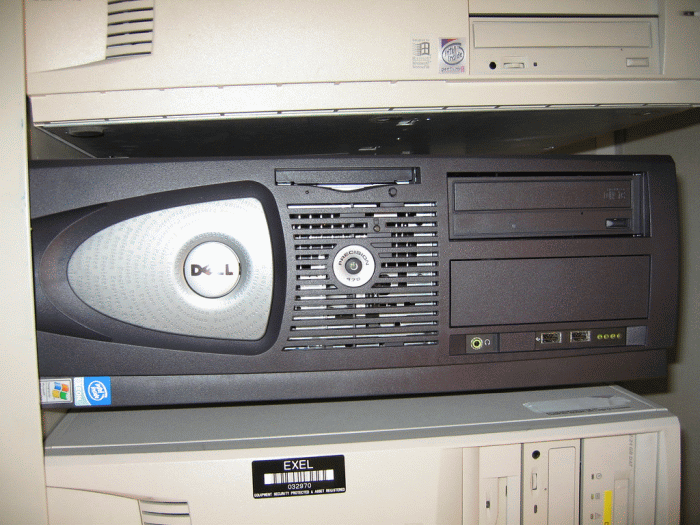
“IMG_0429” by Jemimus is licensed under CC BY 2.0
Playtime is over and now you’re off to work. After all, if you don’t build the 3D models for “Spy Kids 2: The Island of Lost Dreams,” who will? Time to boot up your Dell Precision 530 Fixed Workstation. This was the machine of pros. Featuring Intel’s first dual processor CPU based on the Pentium 4, the 1.76 GHz Xeon was quite the upgrade from the company’s previous professional grade entry. Along with NVIDIA’s Quadro2 Pro graphics card, and up to 4 GB of RDRAM, this bad mama jama would run professional level multiheaded applications such as 3D Studio Max thirty percent faster than its top-performing predecessors. That means less time spent rendering the perfect Spork or Slizzard, and more time daydreaming about all the adulation this movie is sure to rain down upon you. You might even get to meet Cheech Marin. The dream.
See: Dell Workstation on Newegg
It’s difficult to overstate how far technology has come in the last twenty years. Computers are filling roles and opening possibilities that we scarcely imagined in 2001. We here at Newegg are happy to have grown right alongside, and we’re happy to celebrate 20 years of helping you make smart decisions in an ever-evolving marketplace. And while it’s fun to look back at where we were, it’s a lot more exciting to look ahead. Thank you for being a part of our story, we’re thrilled to be a part of yours!

